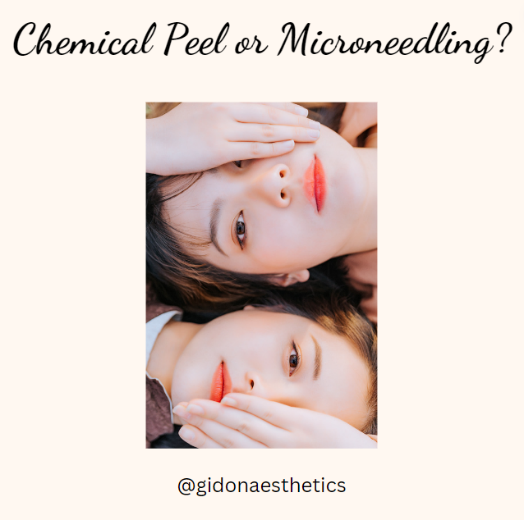Can’t decide between microneedling and chemical peels? Our Toronto-based team can help you choose the best treatment for your goals. Chemical peels and microneedling are two skincare treatments that are known for their ability to rejuvenate the skin and address various concerns. While both treatments aim to improve skin texture and appearance, they differ in the way they work and their targeted skin issues.
Chemical peels involve the application of a chemical solution to the skin to cause exfoliation and peeling of the outer layers. This process stimulates the regeneration of new skin cells, revealing smoother, more evenly toned, and healthier skin underneath. Chemical peels can vary in strength, ranging from superficial peels that target the outermost layer of skin to deeper peels that penetrate multiple layers.
On the other hand, microneedling, also known as collagen induction therapy, utilizes thin needles to create controlled micro-injuries in the skin. Microneedling works by inducing a healing process. These micro-injuries trigger the skin’s natural healing response, leading to increased collagen and elastin production, which gradually improves skin quality. Microneedling can be performed at different depths, allowing for customization based on individual skin concerns and desired outcomes.
One key difference between chemical peels and microneedling is how they work. Chemical peels work primarily through chemical exfoliation, whereas microneedling relies on mechanical stimulation of the skin. As a result, chemical peels may be more effective for addressing surface-level concerns such as sun damage, hyperpigmentation, and mild wrinkling. Microneedling, on the other hand, can target deeper skin issues such as acne scars, stretch marks, and larger pores.
Another difference lies in the downtime and recovery. Chemical peels may result in visible peeling and redness following the procedure. Depending on the strength of the peel, recovery times range from a day up to a week. In contrast, microneedling may cause temporary redness and mild swelling for a day or so and bruising that can last several days. When it comes to long-term results, a series of both chemical peels and microneedling can provide significant improvements in skin texture and appearance.
Ultimately, the choice between chemical peels and microneedling depends on individual skin concerns, preferences, and goals. Some patients may benefit from combining both treatments to target different aspects of skin aging and damage.
Ready to find out if you are a candidate for microneedling or chemical peels? Contact our Toronto-based Gidon Aesthetics & MediSpa for more advice about these skin rejuvenation treatments. Call us at 416-483-4541 or submit a contact form to request a consultation.




